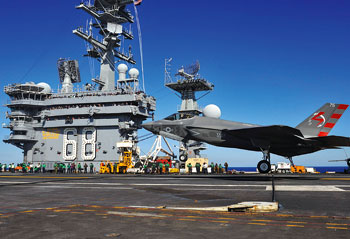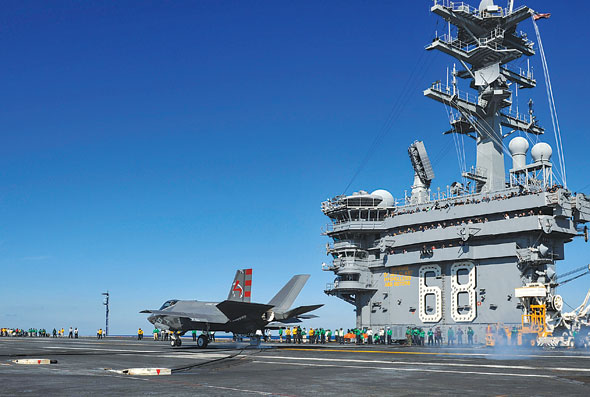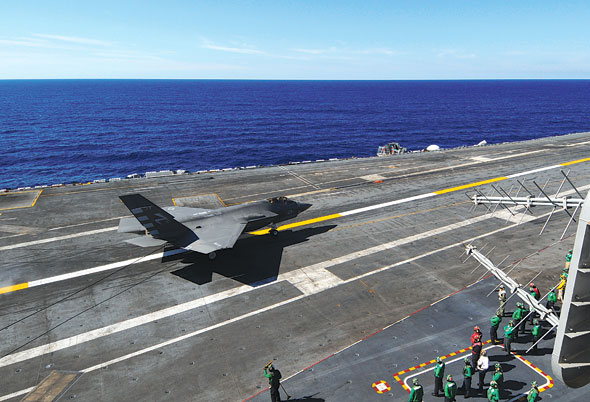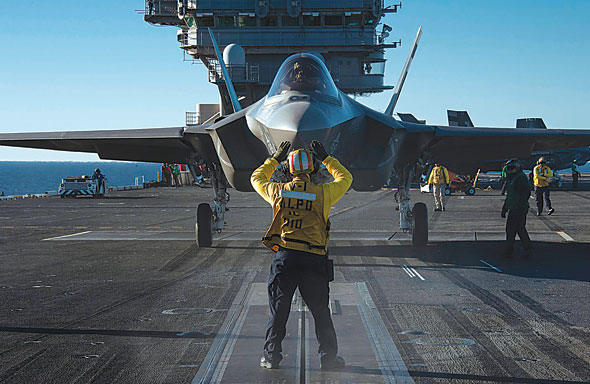INDIAN ARMED FORCES CHIEFS ON
OUR RELENTLESS AND FOCUSED PUBLISHING EFFORTS

SP Guide Publications puts forth a well compiled articulation of issues, pursuits and accomplishments of the Indian Army, over the years

I am confident that SP Guide Publications would continue to inform, inspire and influence.

My compliments to SP Guide Publications for informative and credible reportage on contemporary aerospace issues over the past six decades.
- Admiral Dinesh K. Tripathi assumes Command of the Indian Navy as 26th Chief of the Naval Staff
- Prime Minister witnesses 'Bharat Shakti' – a Tri-Services Firing and Manoeuvre Exercise in Pokhran, Rajasthan
- Interim Defence Budget 2024-25 — An Analysis
- Union Defence budget 2024
- Prime Minister Modi Commemorates Indian Navy Day in a Grand Ceremony
- Prime Minister Modi Flies in the LCA Tejas
- New Chapter in India-Italy Defence Ties
- Airpower beyond Boundaries
F-35C First Landing

On November 3, F-35C Lightning II carrier variant Joint Strike Fighters were launched from the aircraft carrier USS Nimitz (CVN 68) off the coast of San Diego. The launches and recoveries were part of initial at-sea developmental testing phase I (DT-I) for the F-35C. The testing is expected to last two weeks. The F-35C is the carrier variant (CV) of the F-35 Lightning II Joint Strike Fighter designed for the US Navy as a first-day-of-war, survivable strike fighter complement to the F/A-18E/F Super Hornet. The F-35C is designated to replace the US Navy’s F/A-18C/Ds, but not the E/F Super Hornet and E/A-18G Growler electronic attack aircraft.
The F-35C flight test aircraft, CF-3, and CF-5 flew in from Yuma, Arizona. CF-3 hooked the wire perfectly, while the CF-5 performed a fly-by, then a touch-and-go and finally an arrested landing, thus marking a significant milestone for the programme which has been affected by delays and costs.
Vice Admiral Dave Buss, Commander of US Naval Air Forces, termed the event as a “great and historic day” that will be used “as a springboard into the future of naval aviation. The most remarkable thing was how steady and stable it was on approach. I didn’t see a lot of control surface movement. Both aircraft landed exactly where we wanted them to.”
The development testing phase I will happen over the next two weeks, during which time the envelope for flight operations will continually be opened. Night landings are scheduled for November 13-15. Developmental testing phase II is scheduled to begin in 10 months, aboard an undesignated carrier. The final testing is scheduled for 2016.



An F-35C Lightning II carrier variant joint strike fighter conducts its first arrested landing aboard
the aircraft carrier USS Nimitz (CVN 68). Nimitz is underway conducting routine training exercises.





